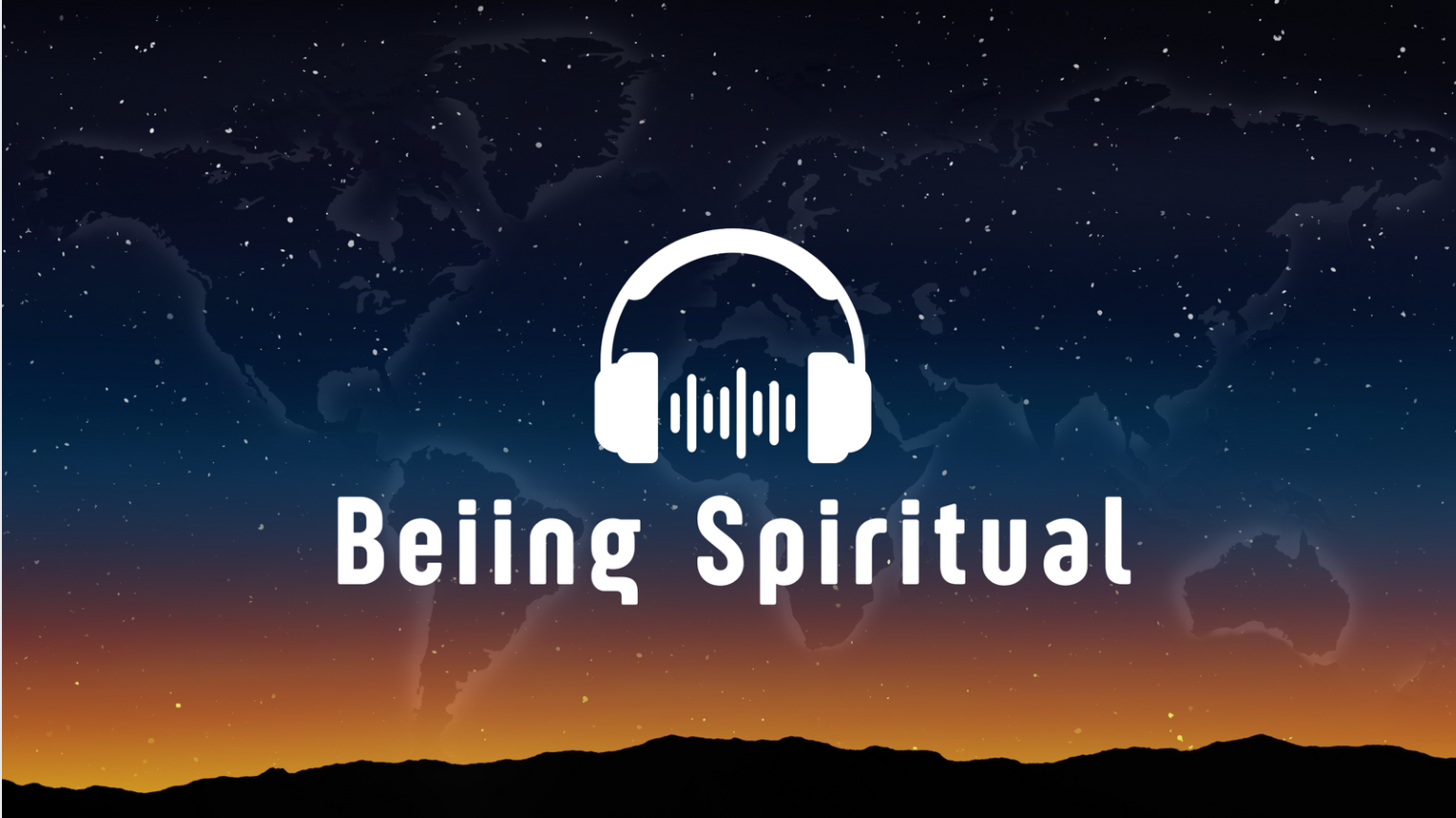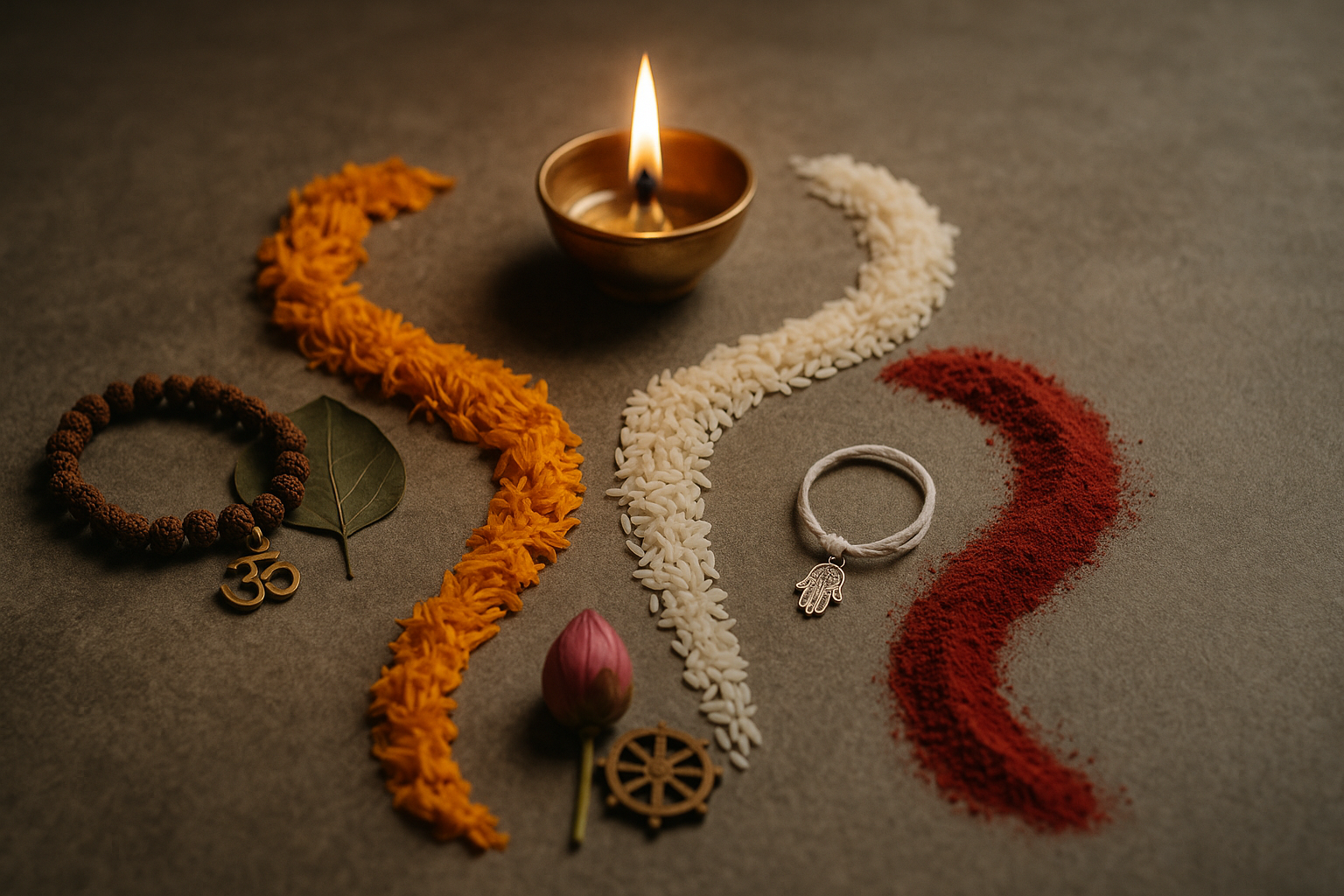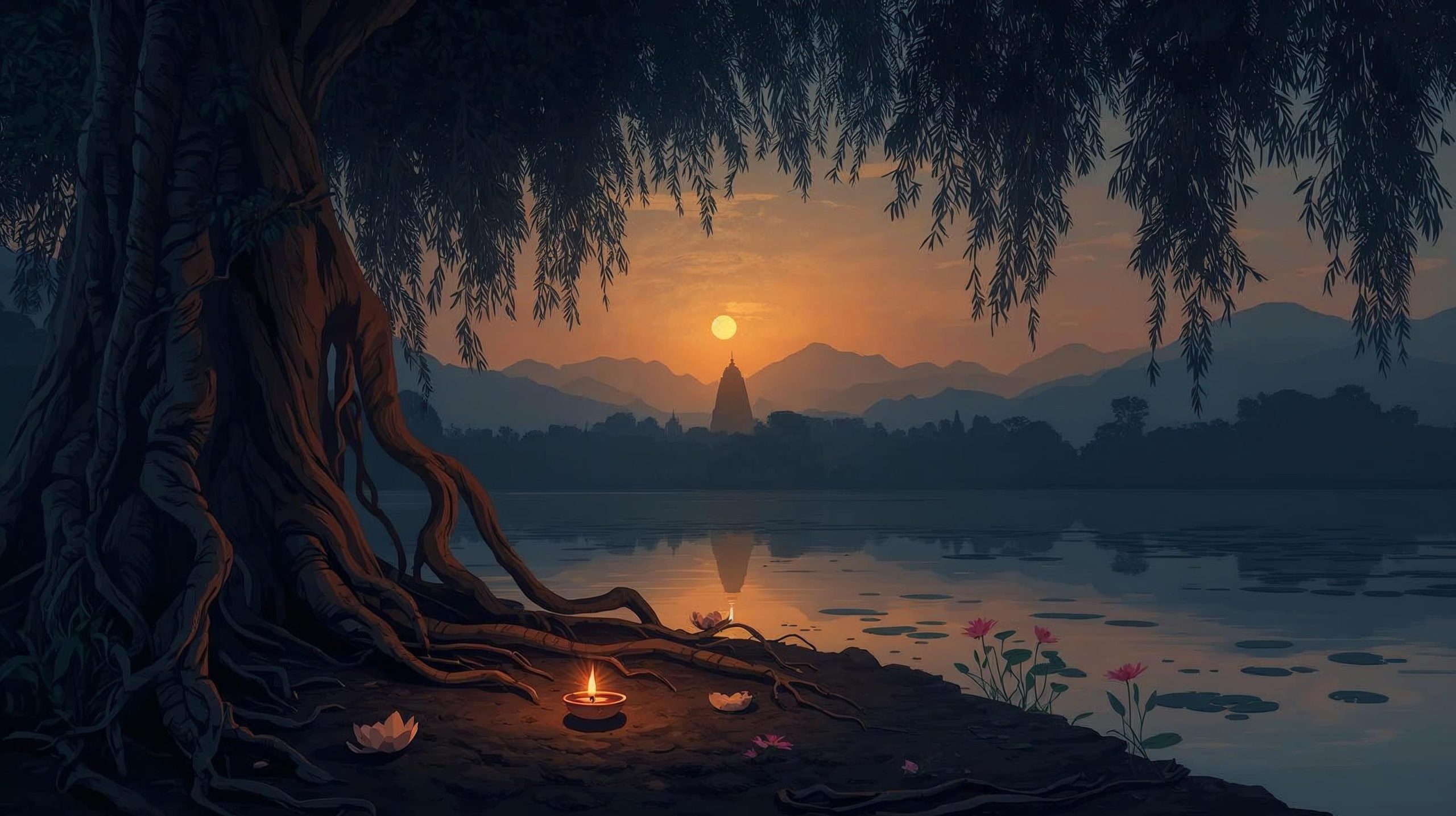The Big Picture
To understand Mokṣa, you must first understand the journey it ends.
- Samsara: The cycle of birth-death-rebirth. This is the continuous loop of existence, shaped by our actions and their consequences (karma). Think of it like a river flowing ceaselessly; our lives are drops of water that keep moving through different forms, driven by the current of karma.
- Mokṣa: The final release from this cycle. It is the realization of your Ātman (the individual Self) as one with Brahman (the Absolute Reality or Divine). Imagine realizing that your single drop of water has always been, and will always be, the vast, boundless ocean itself. In Advaita Vedānta, this is the core insight: “I am not merely the body or the mind; my essence is Brahman.”
Paths Toward Moksha (One Goal, Many Temperaments)
There is no single path to liberation; Hindu wisdom offers several yogas (disciplines) to suit different personalities and temperaments. All of them lead to the same destination.
- Jñāna-Yoga (The Path of Knowledge): This is the path of intellectual and spiritual inquiry. The practitioner constantly asks, “Who am I?” and discriminates between what is real and what is transient.
- Example: A philosopher, a scholar, or a scientist seeks to understand the universal truth by deeply studying spiritual texts and by logically deconstructing their own false beliefs about the self. It’s a path of relentless questioning until only the truth remains.
- Bhakti-Yoga (The Path of Devotion): This is the path of love and unconditional surrender to the Divine. It is about channeling all of one’s emotions into a loving relationship with a chosen deity.
- Example: A musician composing a song as an act of worship, a painter creating a sacred image, or a person simply saying a prayer with an open, loving heart. In Bhakti, the ego softens and dissolves through the power of love.
- Karma-Yoga (The Path of Action): This is the path of selfless service, where you perform your duties without attachment to the results. The focus is on the action itself, not on what you gain from it.
- Example: A doctor treating a patient without thinking about their fee, a volunteer serving food to the homeless, or a child doing household chores not for an allowance, but out of love for their family. Every action becomes a form of spiritual practice.
- Rāja-Yoga (The Path of Meditation): This is the path of mental and physical discipline, most famously taught by Patañjali in the Yoga Sutras. The goal is to calm the mind and body to reveal the inner Self.
- Example: A person dedicating time to regular meditation to quiet their internal chatter, or a practitioner of hatha yoga using postures to prepare the body for deep stillness.
Many traditions blend these paths together in daily life, as one complements the others.
Two Perspectives on Liberation
Hinduism also offers two ways to understand the moment of liberation:
- Jīvan-mukti: “Liberation while living.” This is the state of a person who has attained Moksha in this very life. They are no longer affected by the world’s ups and downs. They continue to live and act, but with a mind that is established in perfect inner peace.
- Videha-mukti: “Liberation after death.” This is the final and complete freedom from the cycle of rebirth, which occurs at the time of death for a person who has achieved Moksha . There is no return to Saṁsāra.
Moksha vs. Nirvana (A Simple Contrast)
Though often confused, Nirvana and Moksha have key philosophical differences.
- Nirvana (Buddhism): The ending of craving, aversion, and ignorance. It is the extinguishing of the causes of suffering. Buddhism does not assert the existence of a permanent, individual Self (Ātman).
- Moksha (Hinduism/Advaita): The realization of the Self (Ātman) as one with the Absolute (Brahman). It is a realization of unity, not an extinguishing of self.
- It is the state of eternal bliss (ānanda) and union with the Divine.
While both concepts point to a state of profound freedom from suffering, their ultimate metaphysical frames are distinct.
Closing Reflection
Moksha is not about going somewhere else or becoming something you are not. It’s about a radical shift in perspective—it is waking up to what you already are: free, undivided, and whole. It is the journey from illusion to truth, a profound homecoming to your deepest, most authentic self.






प्रातिक्रिया दे